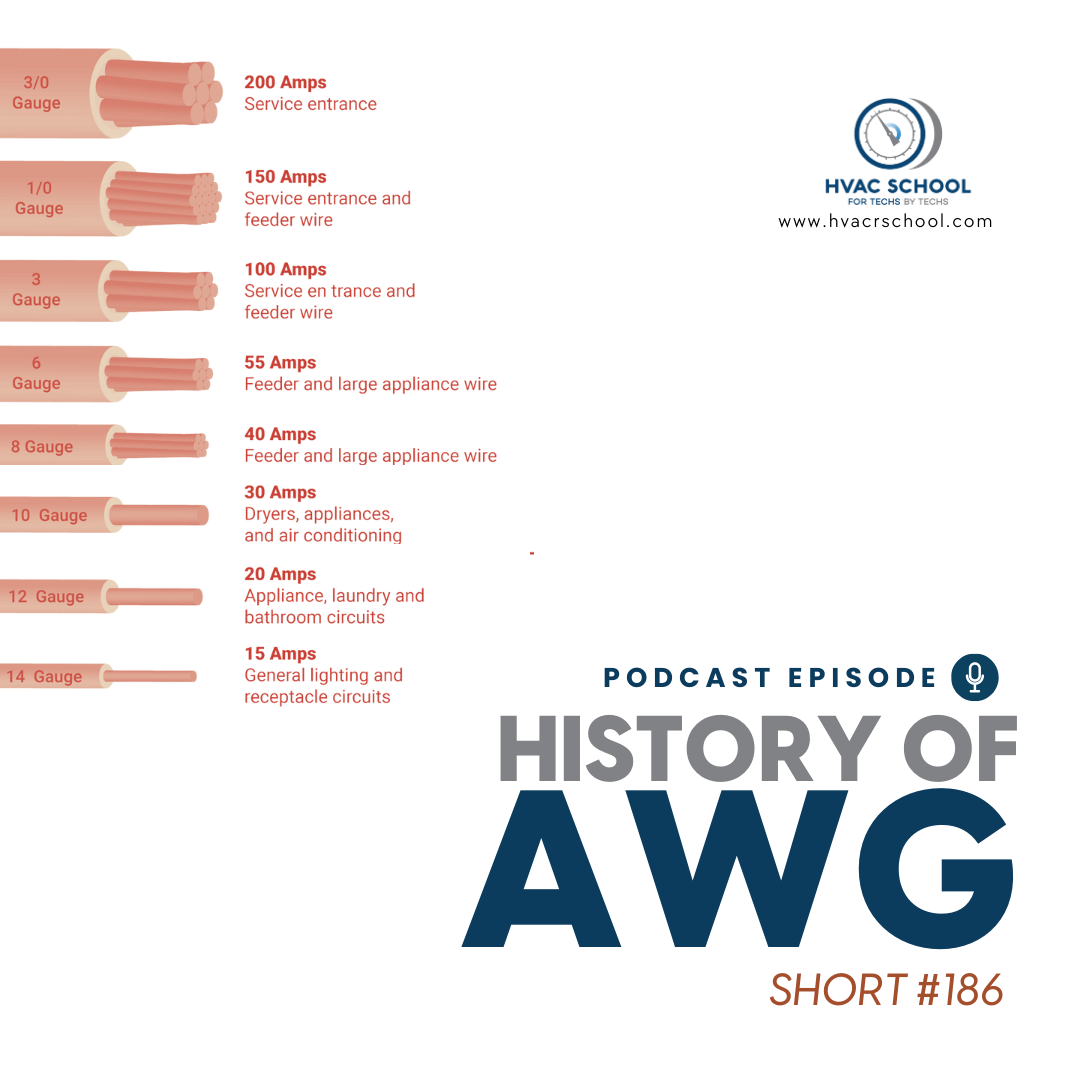History of AWG – Short #186

In this short podcast, Bryan explains the history of AWG, or American wire gauge, which is the sizing system we use for conductors in the United States.
Wires weren't standardized before the 18th century (1700s). As fencing, telegraph, and electrical wires started coming out, there was a need for a standardized system. In England, a standardized system called the Birmingham wire gauge (BWG) was developed in the 1800s. The American Telegraph Company developed the American equivalent, the AWG, shortly afterward. These systems standardized wiring diameters, and the AWG's wire sizes get bigger as they get lower (including NOT wires, which are noted by the number 0 on the gauge, like 2/0).
The AWG scale is a logarithmic scale, meaning that the wire sizes don't vary by a fixed amount; there is a 20% variation between diameter sizes. Our brains are programmed to understand proportionality (i.e., logarithmic values and patterns) better than discrete values. This sizing system based on a logarithmic scale makes it easier for us to observe differences between the diameters.
The metric system for wire sizing is NOT logarithmic; there is a root-10 progression between sizes; this standard is called IEC 60228.
Learn more about the 5th Annual HVACR Training Symposium at https://hvacrschool.com/Symposium24.
If you have an iPhone, subscribe to the podcast HERE, and if you have an Android phone, subscribe HERE.”
Subscribe to our YouTube channel at https://www.youtube.com/@HVACS.
Check out our handy calculators HERE or on the HVAC School Mobile App (Google Play Store or App Store).
Author:









Comments
To leave a comment, you need to log in.
Log In